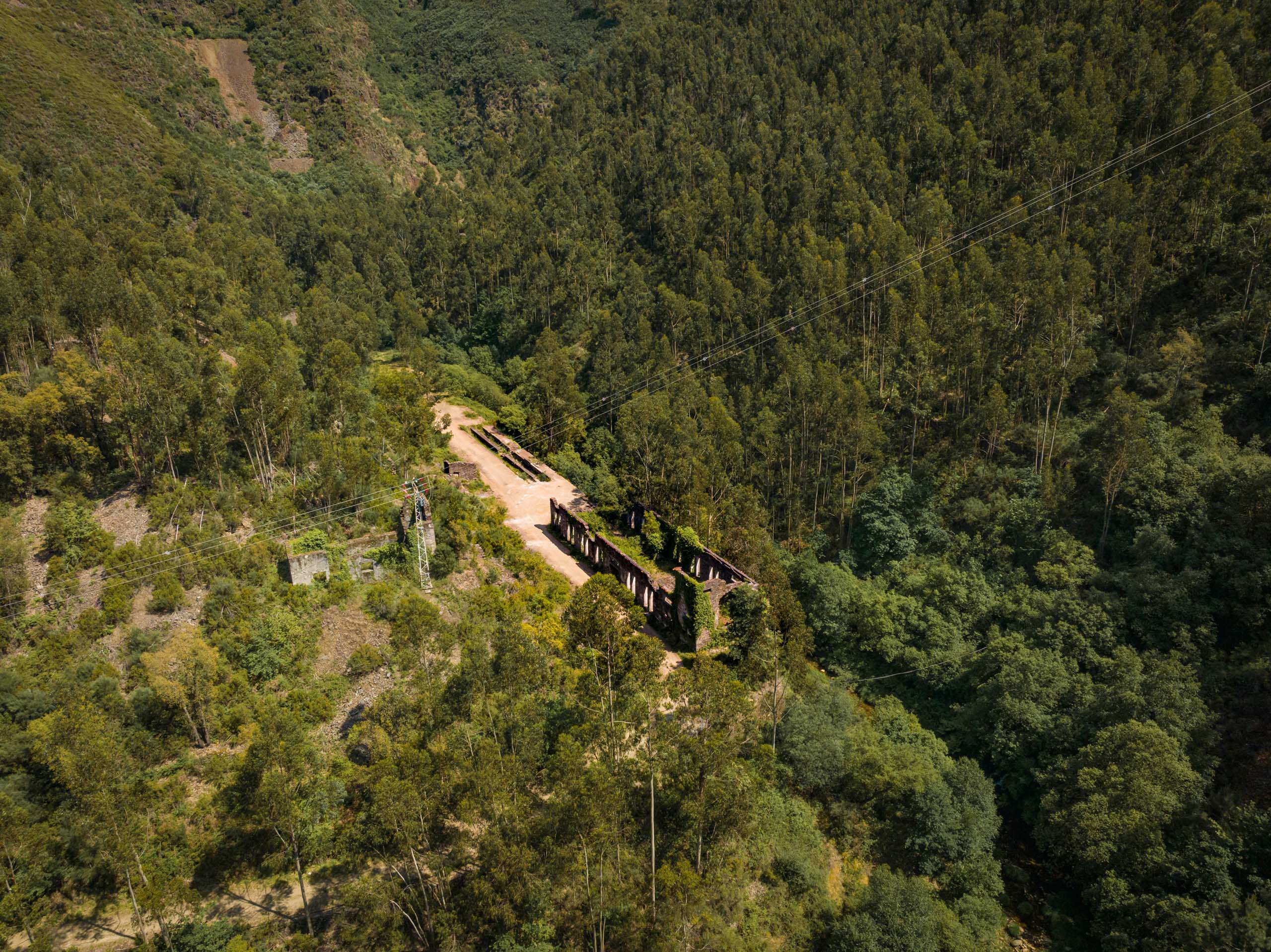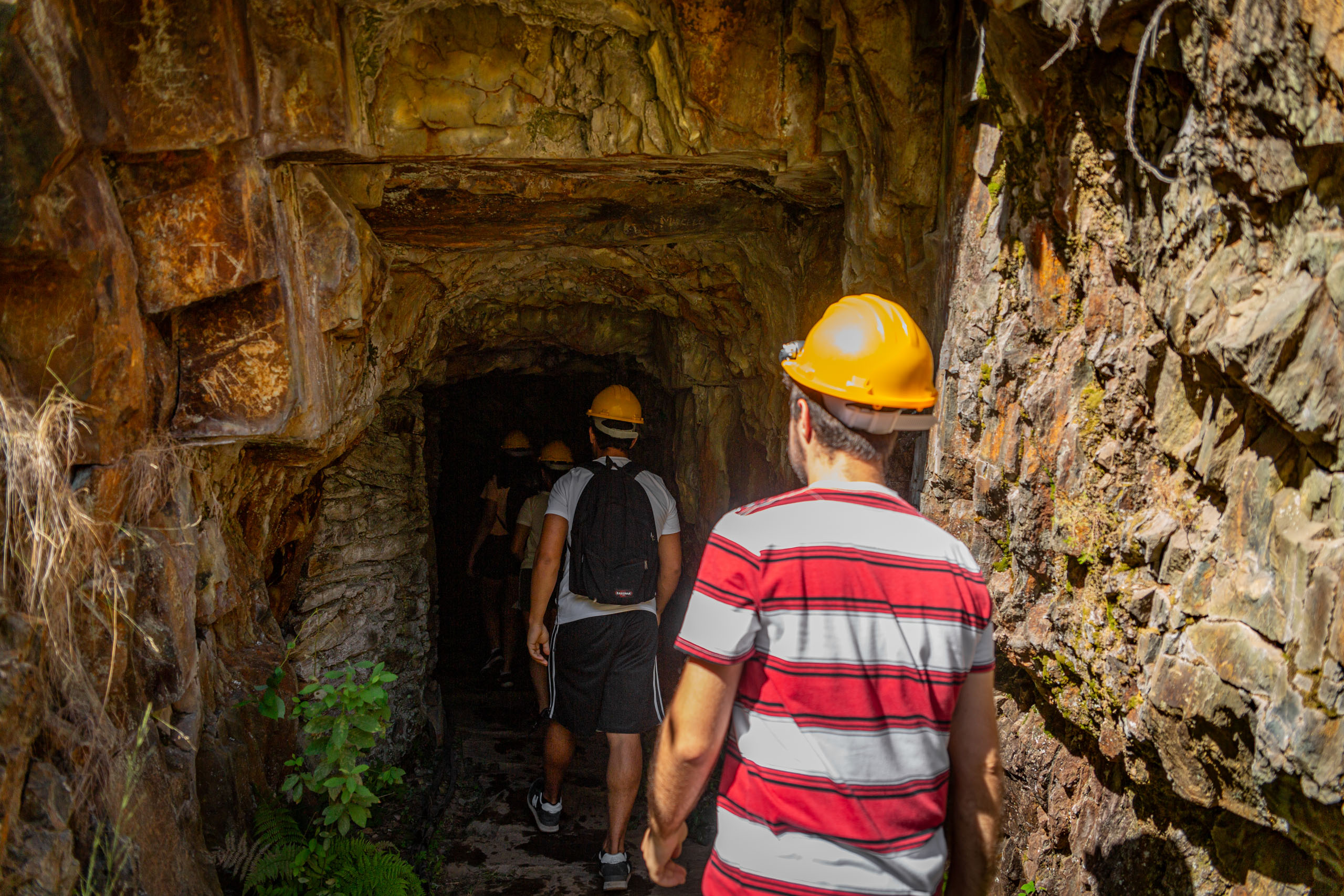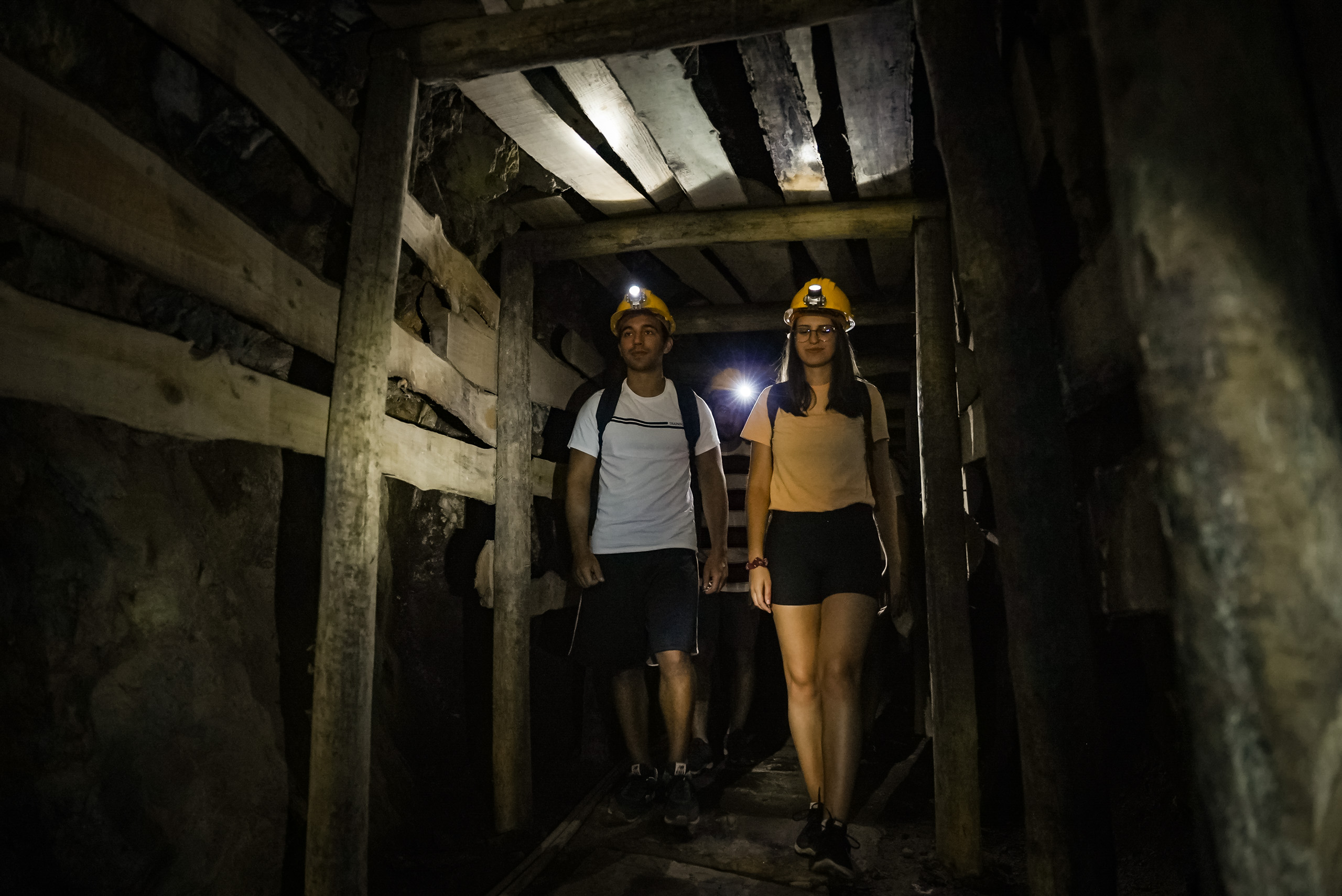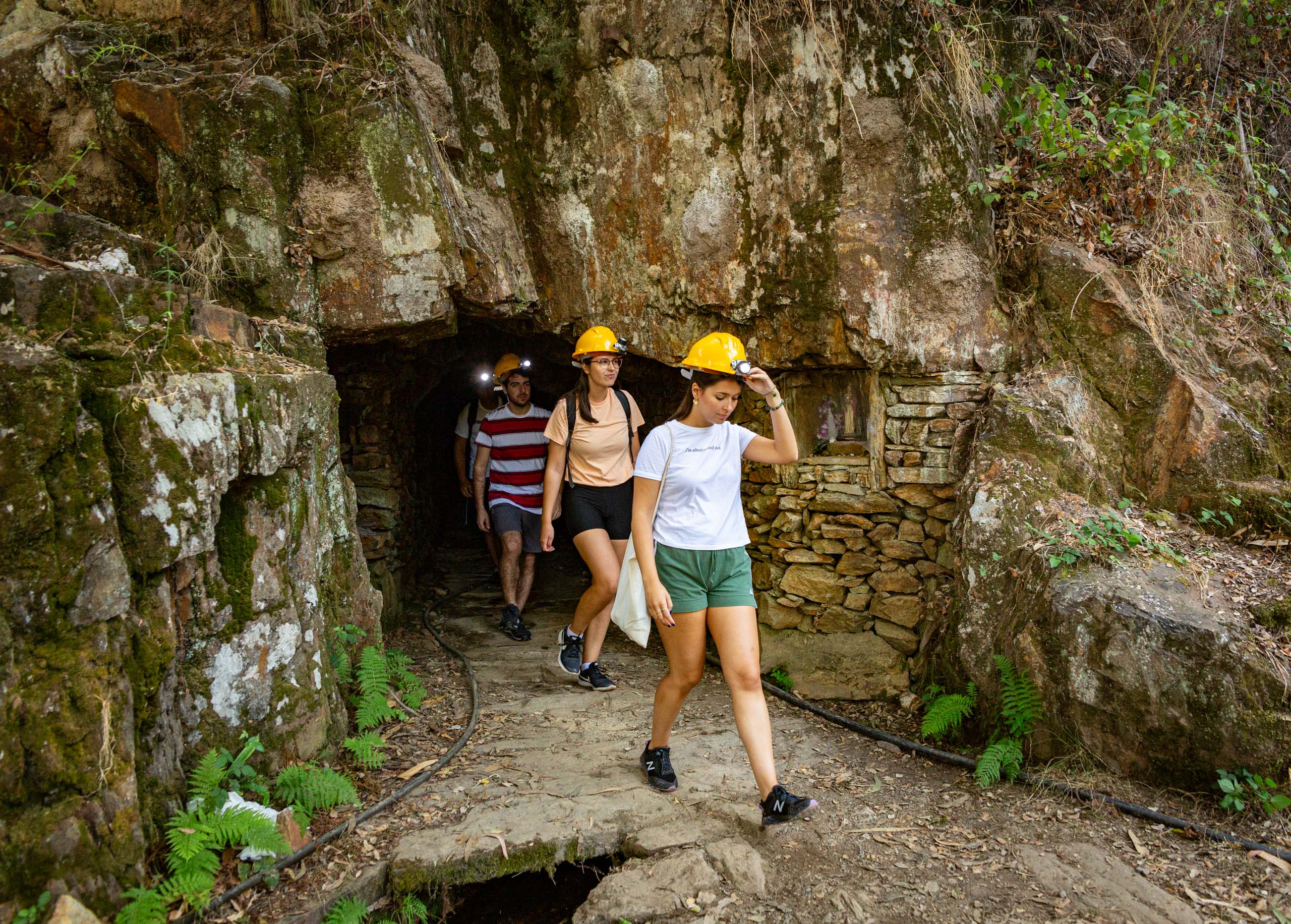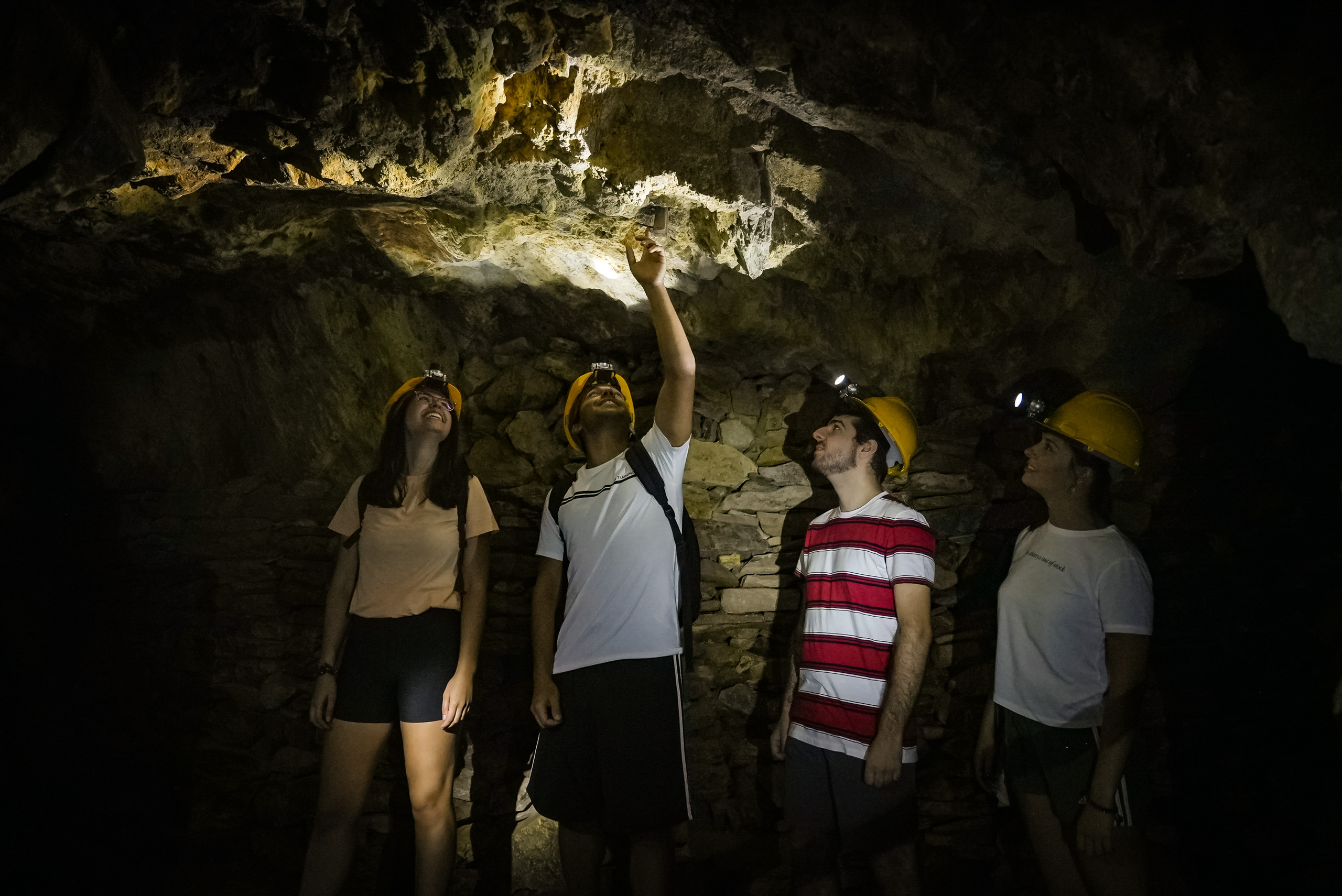Geosite 16 Rio de Frades Mines
Feeding the fury of the Germans!
Let’s go back to 1915, the year in which the first permits to exploit the Rio de Frades mines were granted. In 1923, the Companhia Mineira do Norte de Portugal was founded with German capital and became known as the “German Company”. Its aim was to obtain ore (wolfram) for the production of war material. In 1941, in the middle of World War II, tungsten mining and exports to Germany peaked, with hundreds of workers arriving in Rio de Frades from all over the north of the country in search of tungsten minerals in the region’s schist rocks.
The River Frades, an important watercourse that runs through the region, is considered one of the best rivers in the country for canyoning, allowing you to jump and/or dive into its crystal-clear waters. The canyoning adventure down the Frades ends at the Vale da Cerdeira mining gallery, which allows you to delve deep into the earth and witness the existence of connections to many other galleries that are now important refuges for bat colonies. This region is also the departure or arrival point for the PR6 and 8 geotourism routes, linear routes of around 6 km in length and the stage for the mythical “Zemou Half Marathon”, “Voltas do Impossível” and “Ultra Trail da Serra da Freita” trail races.
The Rio de Frades mines are part of the Iter Hominis Mining Region route.
Geological Information
The German company was the one with the most concessions, which meant it had a larger area to exploit, allowing the Germans to make investments and improvements such as building a road from Arouca or supplying the village with electricity. In addition to the galleries and heaps, today we can still see mining facilities scattered around three main areas: the traditional village, with schist houses; the “Bairro de Cima”, a group of residences housing the mines’ technical and administrative staff (some of which are still occupied today); and a main nucleus of the mines’ working area, located at the bottom of the valley, with an office building, an aid station and a doctor’s office, a laundry, decantation tanks, workshops and the Chapel of Santa Bárbara (now in ruins), patron saint of the miners.
The exploitation of the Rio de Frades Mines is related to the exploitation of tungsten and tin that took place in the Arouca region in the past and which is part of a group of deposits that occur from Galicia to Castile (Spain), crossing the north and center of Portugal, defining the so-called “Iberian tungsten-tin metallogenetic province”. This occurrence makes Portugal the richest country in Europe in this mineral, which is why it was coveted by England and Germany, especially during the Second World War, due to its use in the manufacture of weapons and ammunition. The W-Sn deposit of Rio de Frades is located along a fault system, in an approximate N-S direction, occurring in metamorphic rocks and to the west of the Regoufe plutonite. The metasomatic effects caused by the proximity, at depth, of an apophysis of the Regoufe granite at the end of the contact aureole with the metamorphic rocks were responsible for the mineralization of quartz veins rich in wolframite (most abundant), cassiterite and, more rarely, scheelite. Arsenopyrite is the main sulphide identified.
